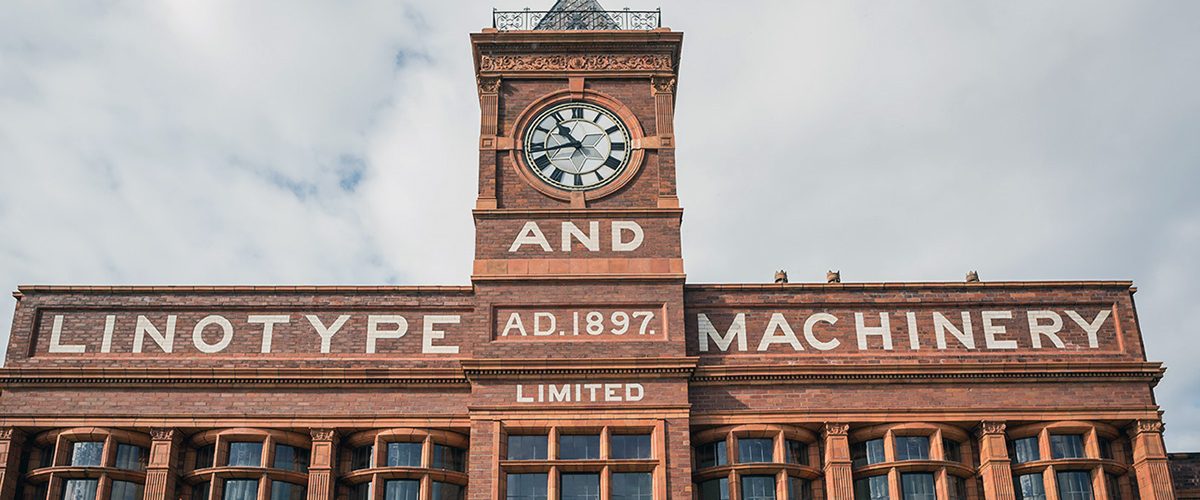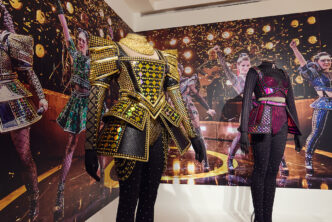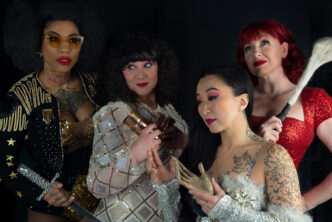In 1897, The Linotype and Machinery Company (L&M) opened a factory in Broadheath that was to fuel a newspaper revolution from 1800s right up to the 1960s.
The distinctive, Victorian building, with its red brick walls measuring two-and-a-half feet in thickness, was created to house the then revolutionary Linotype Machines, and has been at the heart of industrial life in the region for more than a century.
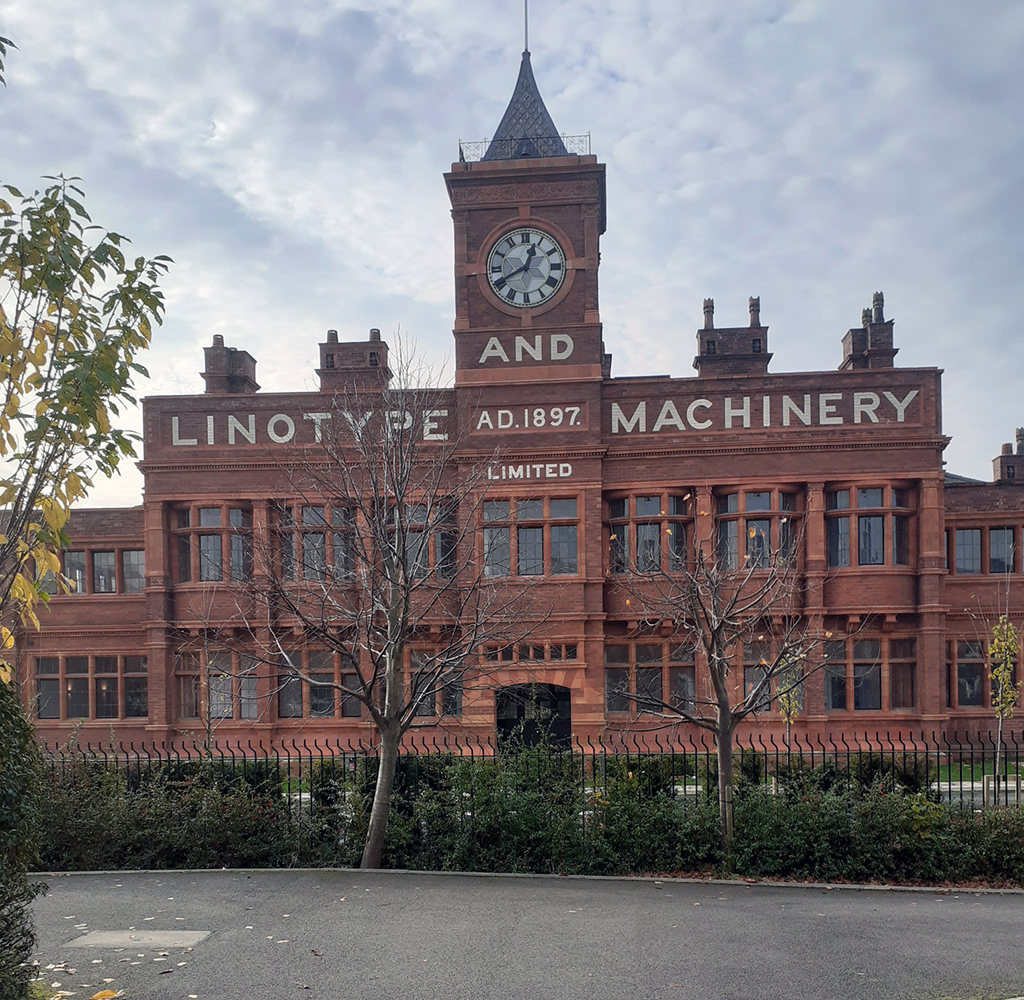
The factory sat in what was hailed the ‘world’s first industrial park’ after the 8th Earl of Stamford inherited the ‘family seat’ estate at Dunham Massey in 1883 and gave up 250 acres of the land to develop the industrial estate Broadheath two years later. Around the same time the American Corporation, Mergenthaler Linotype Company was founded, opening a British offshoot, The Linotype Company in 1889.
Into this new industrial setting came a new machine that was to transform how newspapers were printed. Reputedly invented by Ottmar Mergenthaler, a German immigrant to the US, the Linotype Machine, could transform a line of text, typed with meticulous precision by a Linotypist onto a special 90-key keyboard and transfer the type to a sheet, creating a ‘line o’ type’. Thanks to the genius of matrices and hot metal, this ‘line o’ type’ could be rapidly printed onto many subsequent pages.
Before this invention, each letter for type needed to be slotted into position manually and had to be repeatedly changed each new type for each printing job.
Soon the Linotype Factory was famed for making type for newspapers all over the world – supplying the UK, the British Empire, and parts of Western Europe.
Like its north west contemporary, Port Sunlight, the Altrincham site was work and home to generations of employees. At the height of its success, the firm employed more than 10,000 people to make typesetting machines for the national newspaper industry.
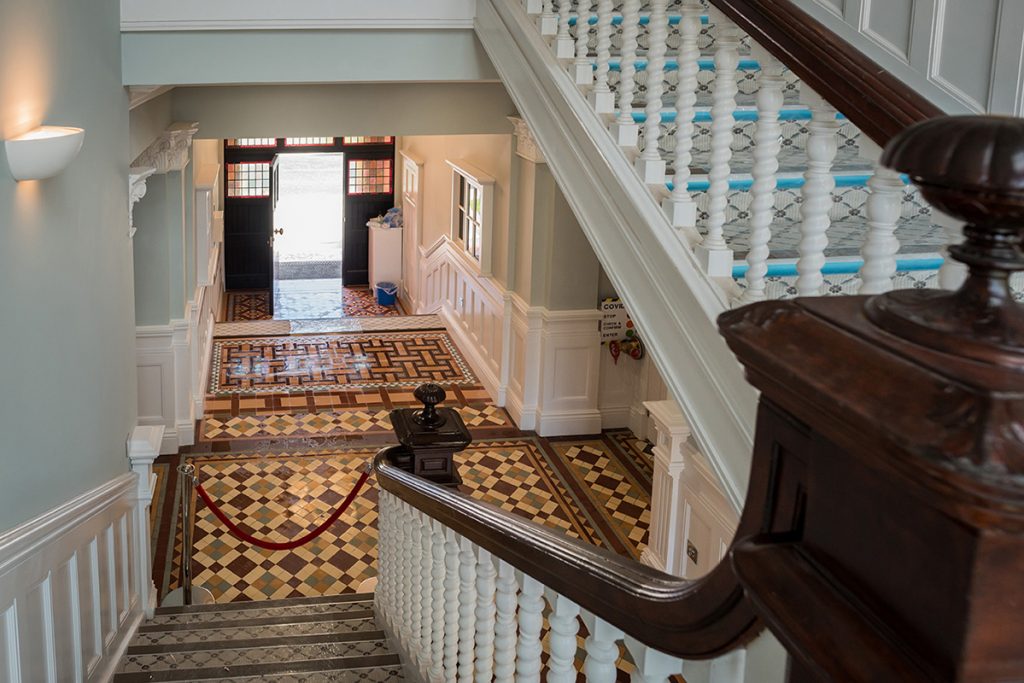
Between 1897 and 1901 the Linotype Company built 185 brand new houses for its employees and the rents charged, were only about half of the then current market rate. Everyone from accountants and engineers to electricians and joiners enjoyed its social clubs and sports on the two football grounds, four tennis courts, two bowling greens, a cricket ground, a playground for children and allotments provided.
Former Linotype Finance Director, Eric Rattray began his career in 1969 as a cost clerk at the factory. He worked hard to gain his accountancy credentials during day release, and his career progressed well with the firm. By 2016, he held the post of Financial Director. I joked with Eric if, when he became an executive, there had been a presentation of a key to an ‘Executive Loo’ and to my surprise indeed there was! In the early days there were also three canteens: one for bosses, one for staff and one for workers. As times changed only one general canteen became the way forward.
I learned from Eric about some of the sales offices across the world in Italy, France, Portugal and Spain to name but a few and how delighted International visitors were to see their flag on the wall when they attended meetings at the factory.
Eric said: “There were more than 2,000 people working there and it was a community. There were 500 houses for workers, all the way up to Manchester Road. It had been designed so you could see the factory from there and you could get to it by all these paths, these pedestrian routes, you didn’t have to cross any roads. There were football and cricket teams, the social club – people met their partners, made friends – it really did mean so much to so many people.
“It was such an important part of the Industrial Revolution, of the modern world, being able to read the printed word, the access to information that it gave them changed people’s lives.”
During its long history, the firm met many challenges, for instance during both World Wars the factory manufactured munitions, gun parts, aeroplane engines, and tank parts. It saw the ‘Three-day week’ in the 1970’s and the two week engineering strike that same decade. During that time, another revolution took place…the computer.
During the 1970s and 1980s the company struggled under increasing competition, and separated from the American corporation in 1983, rebranding as L&M. Business continued to decline, and the Grade II-listed site fell into dis-use, being rented as office space from the 1980s.
In 2015 the site was bought by Cheshire based private house builders, the Morris Group and has now been transformed into a unique collection of 11 luxury apartments. Morris Homes tells me that the company has spent the last few years working closely with conservation experts, Trafford City Council planners and craftsmen to create a network of new home that reflect the area’s rich history. Antique tiles, copper shingles and restored metal frame windows are just some of the features retained in the development.
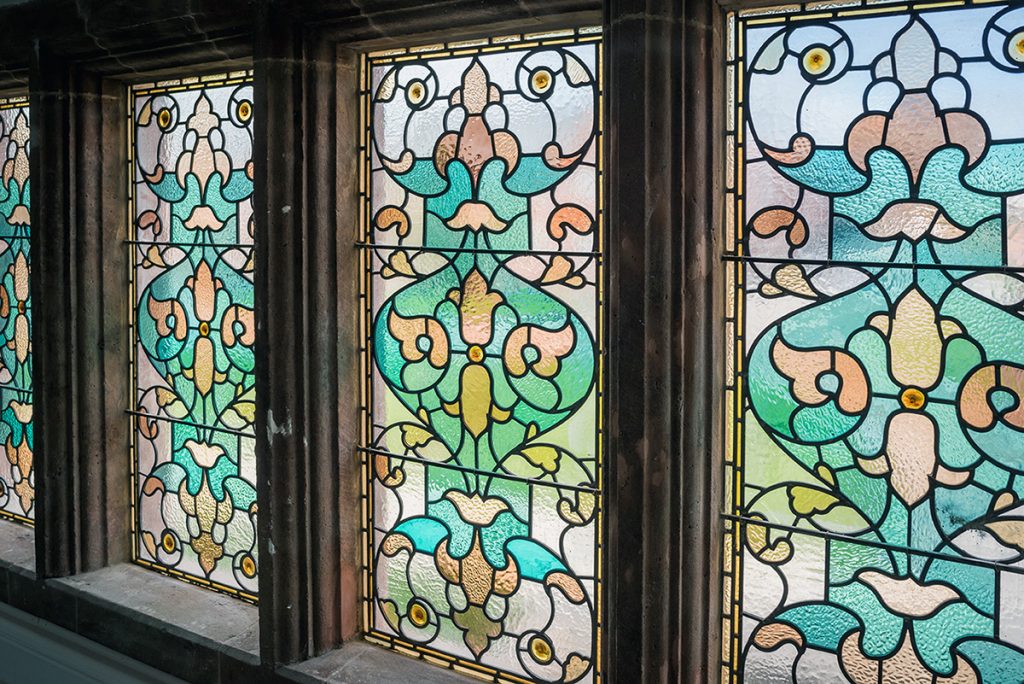
Morris’ Group Planning and Design Director, Garry Goodwin, said: “From large-scale conservation and restoration to smaller details, we’ve tried to retain as much as we can of the character of what is a landmark site and buildings, to create something that will mean just as much to a new community as the building has done for so many generations.”
I wondered where the Linotype Machines could be found now. On researching I found that there were three of the early types presented to the Smithsonian Institute in the USA in 1986 to mark 100 years of the machine that changed the world’s newspaper industries. Among them was the first production model of the original Linotype machine, the kind used for the first time by The New York Tribune to set type for part of its 3 July 1886, editions. I am unsure if all three are still there but appears that one is. One is on view in the Science and Industry Museum in Manchester and there is one at the Science Museum in London.
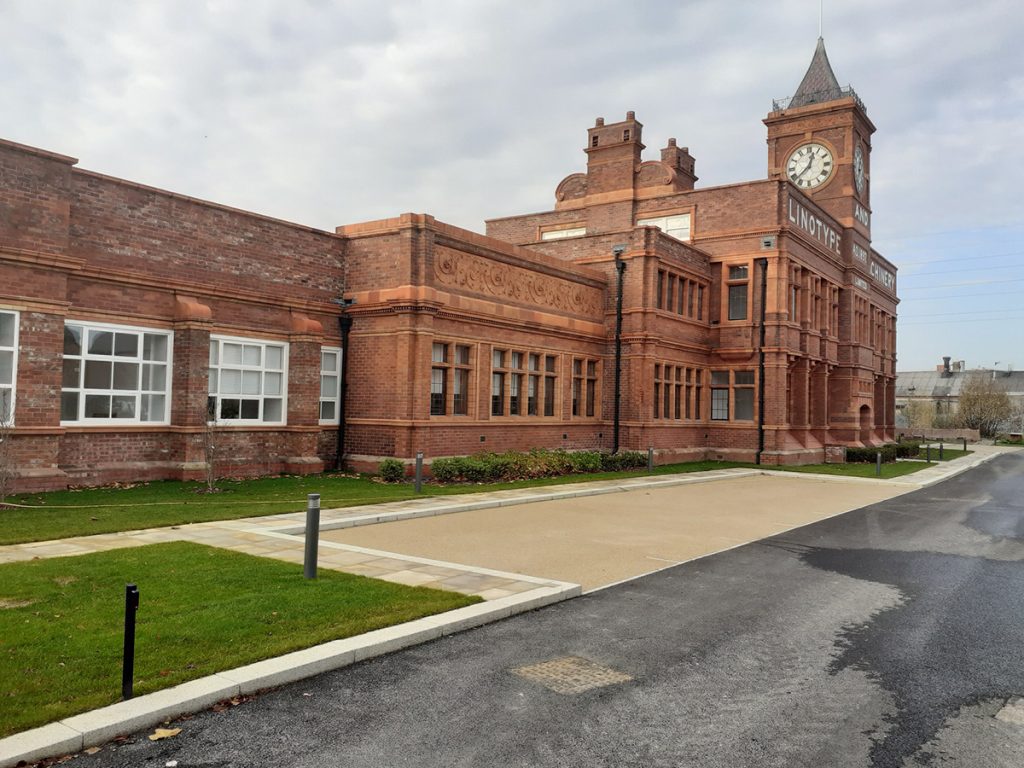
How times have changed. And just as I’m fascinated by the once revolutionary Linotype machines, I’ve no doubt those early printing pioneers would have been incredulous at the revolutions that have followed – I can only imagine what would they say if someone told them, in 2020 a newspaper can be read not only on a device on the palm of your hand but from the watch on your wrist!
Read about the history of the Fisherman’s Friend factory in Fleetwood.

